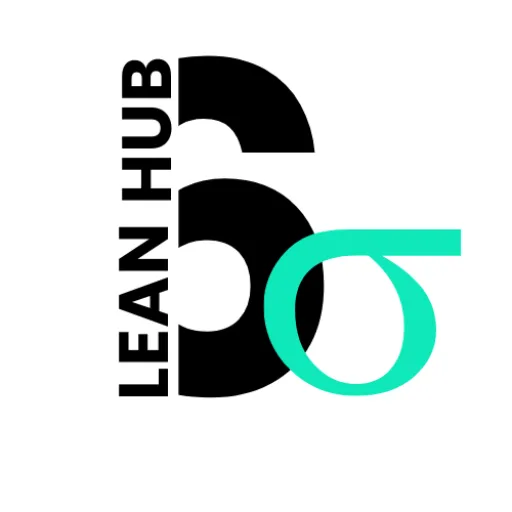Improving Efficiency: Kaizen Event in Action
The concept of Kaizen, originating from Japan, translates to “continuous improvement.” It is a philosophy that emphasizes small, incremental changes that collectively lead to significant enhancements in processes, productivity, and quality. A Kaizen event is a focused, short-term project aimed at improving a specific area within an organization. These events typically last from a few days to a week and involve cross-functional teams working collaboratively to identify inefficiencies and implement solutions.
The essence of a Kaizen event lies in its structured approach to problem-solving, which encourages participation from all levels of the organization, fostering a culture of continuous improvement. Kaizen events are often employed in manufacturing settings but have found applications across various industries, including healthcare, finance, and service sectors. The methodology is rooted in the belief that everyone in an organization can contribute to improvement efforts.
By engaging employees who are directly involved in the processes being examined, organizations can tap into valuable insights and practical knowledge that may otherwise go unnoticed. This grassroots approach not only enhances the effectiveness of the improvements but also boosts employee morale and ownership of the processes.
Key Takeaways
- Kaizen events are short-term, focused improvement projects aimed at making significant changes in a specific area of the organization.
- Planning and preparation for a Kaizen event involves selecting a cross-functional team, setting clear objectives, and creating a detailed schedule.
- During the implementation phase, the team executes the plan, makes necessary changes, and documents the process for future reference.
- Monitoring and measuring results are crucial to determine the success of the Kaizen event and identify areas for further improvement.
- Identifying and addressing bottlenecks is essential to ensure that the improvements made during the Kaizen event are sustainable and effective.
Planning and Preparation for Kaizen Event
Defining Clear Objectives
Once the area is identified, it is essential to define clear objectives for the event. These objectives should be specific, measurable, achievable, relevant, and time-bound (SMART), providing a clear direction for the team.
Assembling a Diverse Team
Preparation also includes assembling a diverse team that represents various functions within the organization. This cross-functional team should include individuals who are directly involved in the process as well as those who can provide different perspectives.
Training and Preparation
Training the team on Kaizen principles and tools is another critical aspect of preparation.
Familiarizing participants with techniques such as value stream mapping, root cause analysis, and 5S can significantly enhance their ability to identify problems and develop effective solutions during the event.
Implementation of Kaizen Event
The implementation phase of a Kaizen event is where the planned activities come to life. Typically, this phase begins with a kick-off meeting where team members review the objectives and outline their roles and responsibilities. The team then engages in activities such as mapping out the current state of the process using value stream mapping techniques.
This visual representation helps identify waste, bottlenecks, and areas for improvement. During the event, team members brainstorm potential solutions to the identified problems. Techniques such as brainstorming sessions, affinity diagrams, and fishbone diagrams can facilitate this process.
Once potential solutions are generated, the team prioritizes them based on feasibility and impact. Rapid prototyping or pilot testing may be employed to evaluate these solutions in real-time before full-scale implementation. This iterative approach allows for adjustments based on immediate feedback, ensuring that the final solutions are practical and effective.
Monitoring and Measuring Results
| Metrics | Data |
|---|---|
| Number of monitoring activities conducted | 25 |
| Percentage of compliance with monitoring procedures | 90% |
| Number of incidents detected through monitoring | 10 |
| Percentage of accuracy in measuring results | 95% |
After implementing changes during a Kaizen event, it is essential to monitor and measure the results to assess the effectiveness of the improvements. Establishing key performance indicators (KPIs) prior to the event provides a benchmark against which progress can be evaluated. These KPIs may include metrics such as cycle time, defect rates, customer satisfaction scores, or employee engagement levels.
Regular follow-up meetings should be scheduled to review these metrics and discuss any challenges encountered post-implementation. This ongoing monitoring allows organizations to identify whether the changes have led to sustained improvements or if further adjustments are necessary. Additionally, documenting lessons learned during this phase can provide valuable insights for future Kaizen events and contribute to a culture of continuous learning within the organization.
Identifying and Addressing Bottlenecks
Bottlenecks are critical points in a process where the flow of work is impeded, leading to delays and inefficiencies. Identifying these bottlenecks is a fundamental aspect of any Kaizen event. Techniques such as process mapping can help visualize workflows and highlight areas where work accumulates or slows down.
Once identified, it is essential to analyze the root causes of these bottlenecks. Addressing bottlenecks often requires a multifaceted approach. Solutions may involve reallocating resources, redesigning workflows, or implementing new technologies.
For instance, if a bottleneck is caused by manual data entry errors leading to delays in processing orders, automating this task through software solutions could significantly enhance efficiency. Engaging employees in brainstorming sessions can also yield innovative ideas for overcoming bottlenecks that management may not have considered.
Employee Involvement and Training
A successful Kaizen event hinges on active employee involvement. Engaging employees not only leverages their firsthand knowledge of processes but also fosters a sense of ownership over improvements. Encouraging participation from all levels of staff creates an inclusive environment where everyone feels valued and empowered to contribute ideas.
Training plays a pivotal role in equipping employees with the skills necessary for effective participation in Kaizen events. Workshops on problem-solving techniques, lean principles, and teamwork can enhance employees’ capabilities to identify issues and propose solutions. Furthermore, ongoing training initiatives can instill a culture of continuous improvement beyond individual events, ensuring that employees remain engaged in seeking efficiencies long after the initial Kaizen event concludes.
Sustaining Improvements
Sustaining improvements achieved during a Kaizen event is often more challenging than implementing them initially. To ensure that changes are maintained over time, organizations must establish mechanisms for accountability and continuous monitoring. This may involve assigning responsibility for specific improvements to designated team members or creating cross-functional committees tasked with overseeing ongoing progress.
Regular reviews of performance metrics are essential for sustaining improvements. These reviews should not only focus on whether targets are met but also explore why certain changes may not be yielding expected results. Creating feedback loops where employees can share their experiences with new processes fosters an environment of open communication and continuous learning.
Additionally, celebrating successes—no matter how small—can reinforce positive behaviors and motivate teams to maintain their commitment to improvement.
Case Studies and Success Stories
Numerous organizations have successfully implemented Kaizen events with remarkable results. For instance, Toyota is often cited as a pioneer in applying Kaizen principles within its production system. The company’s commitment to continuous improvement has led to significant reductions in waste and enhanced efficiency across its manufacturing processes.
By empowering employees at all levels to identify problems and propose solutions, Toyota has cultivated a culture that prioritizes quality and innovation. In healthcare, Virginia Mason Medical Center in Seattle adopted Kaizen principles to improve patient care processes. By conducting focused Kaizen events aimed at reducing patient wait times and enhancing service delivery, the hospital achieved substantial improvements in patient satisfaction scores and operational efficiency.
The success of these initiatives demonstrated how Kaizen could be effectively applied outside traditional manufacturing environments. These case studies illustrate that when organizations embrace the Kaizen philosophy—focusing on continuous improvement through employee involvement—they can achieve transformative results that enhance both operational performance and employee engagement. The stories serve as powerful reminders that small changes can lead to significant impacts when approached systematically and collaboratively.
FAQs
What is a kaizen event?
A kaizen event is a focused, short-term project aimed at making significant improvements in a specific area of a business or organization. It is a key component of the kaizen philosophy, which emphasizes continuous improvement.
What is the purpose of a kaizen event?
The purpose of a kaizen event is to identify and implement improvements in a specific process, system, or area of an organization in a short period of time. The goal is to achieve measurable and sustainable results that contribute to overall business success.
How long does a kaizen event typically last?
Kaizen events are typically short-term projects that last anywhere from a few days to a few weeks. The duration of the event depends on the scope of the improvement project and the specific goals that need to be achieved.
What are the key steps involved in a kaizen event?
The key steps involved in a kaizen event typically include: defining the project scope and goals, assembling a cross-functional team, analyzing the current state of the process, identifying opportunities for improvement, implementing changes, and measuring the results.
What are the benefits of conducting a kaizen event?
Some of the benefits of conducting a kaizen event include: improved efficiency, reduced waste, increased productivity, enhanced quality, better employee engagement, and a culture of continuous improvement within the organization.






